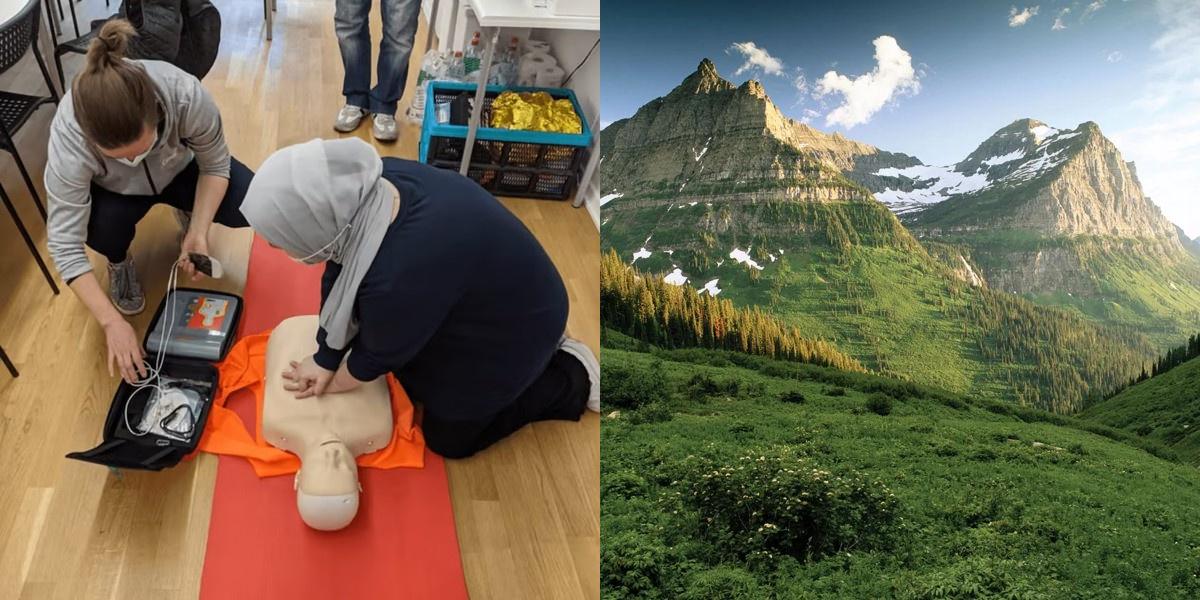What is a Paramedic?
A paramedic is a highly trained medical professional who provides emergency medical care to individuals in critical situations. They are often the first responders on the scene and play a crucial role in stabilizing patients and transporting them to medical facilities.
Some of the responsibilities of a paramedic include:
- Assessing a patient's condition and providing appropriate medical treatment
- Administering medications and performing advanced medical procedures
- Monitoring vital signs and responding to changes in a patient's condition
- Collaborating with other healthcare professionals to ensure the best possible care for the patient
- Documenting all medical interventions and observations accurately
Where does a Paramedic work?
Paramedics can work in a variety of settings, including:
- Ambulance Services: Paramedics are commonly employed by ambulance services, where they respond to emergency calls and provide on-site medical care.
- Hospitals: Some paramedics work in hospital emergency departments, where they assist in treating critically ill or injured patients.
- Fire Departments: Many fire departments employ paramedics who provide medical assistance in addition to firefighting services.
- Air Medical Services: Paramedics may also work in air medical services, providing emergency medical care during helicopter or airplane transport.
How to Become a Paramedic in Montana?
To become a Paramedic in Montana, one must first complete an accredited Paramedic education program, typically a 1-2 year associate's degree. After graduating, the individual must pass the National Registry of Emergency Medical Technicians (NREMT) exam to obtain their Paramedic certification. With the certification in hand, they can then search for Paramedic job opportunities in Montana.
What are the requirements to become a Paramedic in Montana?
To become a paramedic in Montana, you must meet certain education and legal requirements. These include:
- Education: You must complete a state-approved paramedic training program. These programs typically include both classroom instruction and hands-on clinical experience.
- Certification: After completing the training program, you must pass the National Registry of Emergency Medical Technicians (NREMT) paramedic certification exam.
- Licensure: In Montana, you must obtain a license from the Montana Board of Medical Examiners to practice as a paramedic.
- Other Requirements: You must be at least 18 years old, have a high school diploma or GED, and hold a valid driver's license.
How do I get my Paramedic certification?
If you have a passion for helping others and thrive in high-pressure situations, a career as a paramedic may be the perfect fit for you. Paramedics play a crucial role in the healthcare system, providing emergency medical care to individuals in need. To become a certified paramedic, you will need to complete a series of steps and requirements, which may vary depending on the state or country you reside in. In this article, we will outline the general process of obtaining your paramedic certification.
1. Obtain your EMT-Basic certification: Start by becoming an EMT-Basic. Enroll in a state-approved training program that includes classroom instruction, practical skills training, and clinical experience. Once completed, pass the National Registry of Emergency Medical Technicians (NREMT) exam to get your EMT-Basic certification.
2. Complete a paramedic training program: After getting your EMT-Basic certification, enroll in a paramedic training program offered by community colleges, technical schools, or universities. These programs usually last one to two years and include advanced medical training and hands-on clinical experience.
3. Pass the NREMT paramedic exam: After completing your training, you need to pass the NREMT paramedic exam. This exam has a written portion and a practical skills assessment. Successfully passing this exam demonstrates your readiness to provide advanced emergency medical care.
4. Apply for your paramedic certification: With your exam passed, apply for your paramedic certification through your state or local EMS agency. Submit your application along with proof of your education and training, and pay any required fees. Once approved, you’ll receive your paramedic certification, opening up a wide range of career opportunities in the field.
How do I get a job as a Paramedic?
Once you have obtained your paramedic certification, you may be wondering how to go about finding a job in the field. The demand for paramedics is expected to grow in the coming years, making it a promising career path. Here are some steps you can take to increase your chances of securing a job as a paramedic:
1. Update your resume and cover letter: Make sure your resume and cover letter are current and tailored to each specific job. Highlight your education, training, and experience, including clinical rotations or internships. Emphasize skills like patient assessment, trauma care, and medical interventions, and list any certifications or licenses you hold.
2. Network and make connections: Networking can be a valuable tool in your job search. Connect with paramedics and other healthcare professionals in your area, attend career fairs and industry events, and join professional organizations related to emergency medicine. Building these connections can lead to job opportunities and mentorship.
3. Research job opportunities: Look for paramedic job openings in your area and beyond. Check online job boards, and reach out to local ambulance services, hospitals, and fire departments. Consider applying for both full-time and part-time positions in various healthcare settings.
4. Prepare for interviews and assessments: When you start getting interview offers, be prepared. Practice common interview questions and your responses, and be ready to demonstrate your skills through practical assessments or simulations. Familiarize yourself with the protocols and procedures of the organizations you're applying to and any relevant local or state regulations.
5. Continue your education and training: Stay updated with the latest practices in the field by continuing your education and training. Pursue advanced certifications or specializations like critical care paramedicine or flight paramedicine. These additional qualifications can make you a more competitive candidate and open up further career opportunities.
Career Paths and Opportunities after Becoming a Paramedic
Becoming a paramedic opens up a wide range of career paths and opportunities within the field of emergency medicine. Whether you choose to work in a hospital setting, in an ambulance, or in a specialized area of paramedicine, there are numerous options to explore. Here are a few career paths you may consider after becoming a paramedic:
-
Emergency Medical Services (EMS): Many paramedics choose to work in the traditional EMS setting, responding to emergency calls and providing medical care on ambulances. In this role, you may work for a private ambulance service, a fire department, or a government agency. EMS paramedics are responsible for assessing patients, administering medications, providing life-saving interventions, and transporting patients to hospitals.
-
Hospital Emergency Department: Paramedics can also choose to work in hospital emergency departments, where they provide advanced medical care to patients who arrive by ambulance or walk-in. In this role, you may work alongside doctors and nurses to stabilize patients, perform procedures, and assist with resuscitation efforts. Working in a hospital setting can provide opportunities for further specialization and advancement.
-
Critical Care Transport: Some paramedics choose to work in critical care transport, providing specialized medical care to critically ill or injured patients during interfacility transfers. Critical care paramedics may work on ambulances or helicopters, transporting patients between hospitals or from the scene of an incident to a specialized facility. This role requires additional training and certifications, such as advanced cardiac life support (ACLS) and pediatric advanced life support (PALS).
-
Specialized Teams: Paramedics can also join specialized teams, such as tactical paramedic teams, search and rescue teams, or disaster response teams. These teams often work in high-risk environments or provide medical support in unique situations. Specialized teams require additional training and may have specific physical or mental requirements.
-
Education and Training: As a paramedic, you may have the opportunity to become an instructor or educator, teaching future paramedics and EMTs. This role allows you to share your knowledge and experience with others, helping to shape the next generation of healthcare providers. Many paramedic programs and training centers hire experienced paramedics as instructors.
-
Management and Administration: Paramedics with leadership skills and a desire to make a broader impact may choose to pursue management or administrative roles within the EMS system. These roles involve overseeing operations, managing budgets, and developing policies and protocols. With additional education and experience, paramedics can move into positions such as EMS director or operations manager.
Frequently Asked Questions





